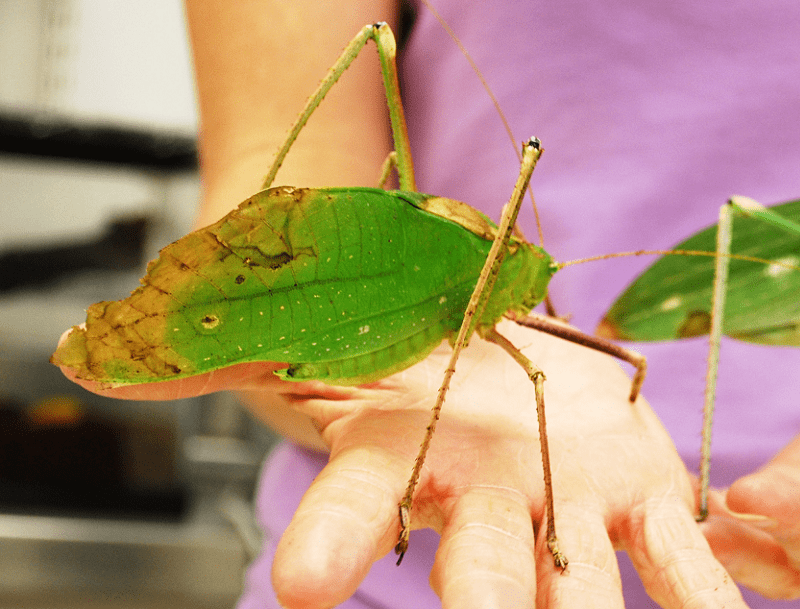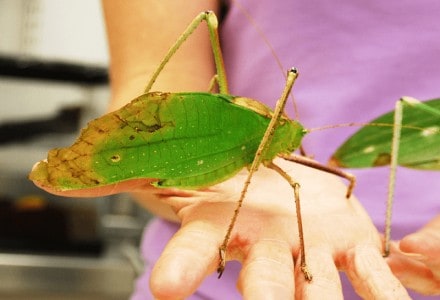
Giant Katydid Facts
- The remarkable Giant Katydid ranks as the largest known species of the katydid on earth.
- Worldwide, there appear to be roughly 6,400 recognized types of katydid extant.
- Sometimes people also refer to this invertebrate as the Giant Long-Legged Katydid, for the obvious reason.
- Though it possesses large wings, it rarely chooses to fly.
- Despite the size of its legs, it also rarely jumps, either.
- Its distinctive body shape and coloring provides a natural camouflage.
Giant Katydid Physical Characteristics
The surprising Giant Katydid may attain a body length of as much as 6 in (15 cm). Its antennae develop rather large and may be longer than the entire body. Its most distinctive physical characteristic remains its extremely long legs.
The coloring consists of various shades of green, to facilitate camouflage.
As with other species of katydid, this one is also capable of producing a loud sound through stridulation of their hind wings.
This sound is used to attract a mate. In fact, this rather impressive invertebrate easily ranks as one of the loudest insects on the planet.
Kingdom: Animalia
Phylum: Euarthropoda
Class: Insecta
Order: Orthoptera
Family: Tetiigonidae
Genus: Arachnacris
Species: A. corporalis
Photo Credit: Houston Museum of Natural Science
CC License: https://bit.ly/1iowB8m
Giant Katydid Distribution, Habitat, and Ecology
The rather remarkable invertebrate justifiably named the Giant Katydid evolved as endemic to the remote mountain slopes of the country of Malaysia, in Asia.
There, it solely inhabits the thick regions of forest, where its shape and coloring allows it to blend in with its habitat extremely effectively.
Most specifically, it typically inhabits the crowns of the numerous species of deciduous trees found in the region.
This insect also lives a nocturnal life, typically feeding at night. It primarily feeds on vegetation yet occasionally consumes small insects as well.
Check out our articles on Oak Treehopper, Lichen Katydid, Giant Lubber Grasshopper

